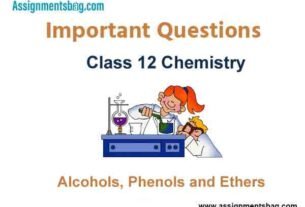Please refer to Case Study Chapter 3 Money and Banking with answers provided below. These case study based questions are expected to come in the upcoming Class 12 Economics examinations. We have provided economics case studies with answers class 12 for all chapters on our website as per the latest examination pattern issued by CBSE, NCERT, and KVS.
Chapter 3 Money and Banking Economics Case study with Answers Class 12
Case Based Questions :
Following the recommendations of the Second Working Group on Money Supply (SWG) in 1977, RBI has been publishing four monetary aggregates – M1, M2, M3 and M4 – besides the reserve money. India Money Supply M1 data reached an all-time high of 655.498 USD bn in Mar 2021.
“The year witnessed a higher than average increase in banknotes in circulation primarily due to precautionary holding of cash by the public induced by the covid-19 pandemic, and its prolonged continuance,” said the RBI annual report.
“Concerted efforts were made to ensure that currency chests remain adequately stocked with all denominations of banknotes in order to maintain timely supply of fresh banknotes across the country.
Going ahead, the Reserve Bank’s endeavour would be to enhance the life span of banknotes, automate the handling and processing of notes, and rationalise the available infrastructure for maximum utilisation,” it further said.
Question. RBI’s endeavour to enhance life span of banknotes highlights ___________ function of the Central bank.
(a) currency authority
(b) banker’s bank
(c) agent
(d) banker to the government
Answer
A
Question. Which of the following agency is responsible for issuing ₹1 currency note in India?
(a) Reserve Bank of India
(b) Ministry of Commerce
(c) Ministry of Finance
(d) NITI Aayog
Answer
C
Question. Which of the following is not a part of M1 measure of money supply in an economy?
(a) Currency and coins with the public
(b) Current account deposits with commercial banks
(c) Inter- bank deposits
(d) Demand deposits with the banks
Answer
C
Question. Money supply refers to:
(a) Total flow of money in circulation in the economy
(b) Total volume of money held by the government
(c) Total stock of money held by the public at a particular point of time
(d) Total volume of money held by public over a period of time
Answer
C
To boost provision of immediate liquidity for ramping up COVID related healthcare infrastructure and services in the country, an on-tap liquidity window of ₹50,000 crore with tenors of up to three years at the repo rate is being opened till March 31, 2022. Under the scheme, banks can provide fresh lending support to a wide range of entities including vaccine manufactures; importers/suppliers of vaccines and priority medical devices; hospitals/dispensaries; pathology labs; manufactures and suppliers of oxygen and ventilators; importers of vaccines and COVID related drugs; logistics firms and also patients for treatment.
The ₹50,000 crore emergency health service loans will be classified as priority sector loans till repayment or maturity, whichever is earlier. Priority sector loans are exempted from maintaining cash reserve or statutory liquidity ratios, and so banks can extend them at concessional rates too.
Question. Commercial banks are required to keep a minimum ratio of their net demand and time liabilities with RBI. This is known as __________.
(a) cash reserve ratio
(b) statutory liquidity ratio
(c) bank rate
(d) repo rate
Answer
A
Question. When RBI comes to the rescue of a bank that is solvent but faces temporary liquidity problems by supplying it with much needed liquidity when no one else is willing to extend credit to that bank, it acts as _____________.
(a) clearing house
(b) lender of last resort
(c) manager of public debt
(d) currency authority
Answer
B
Question. The apex institution of country’s monetary system is __________.
(a) commercial bank
(b) central bank
(c) Ministry of finance
(d) cooperative banks
Answer
B
Question. Which function of the central bank is highlighted in the above extract?
(a) Banker to the government
(b) Banker’s bank and supervisor
(c) Bank of issue
(d) Custodian of foreign exchange
Answer
B
